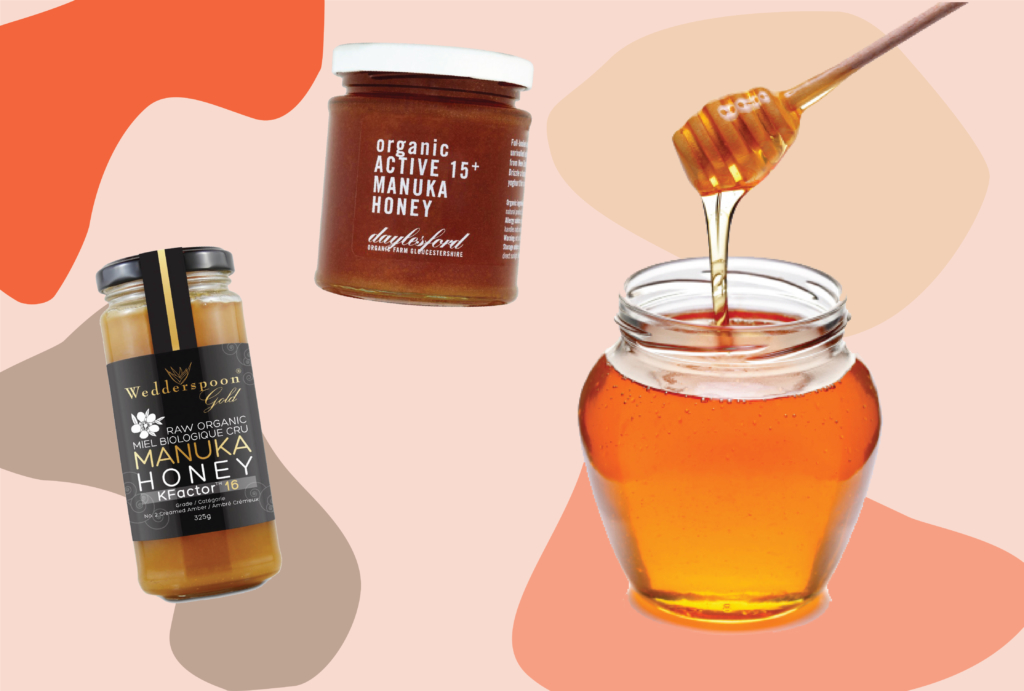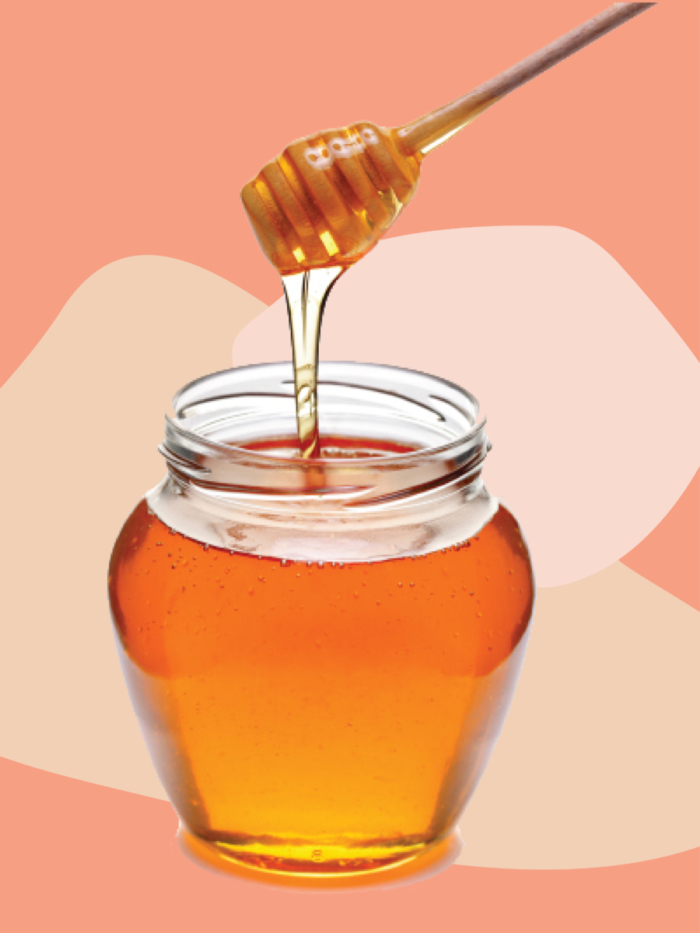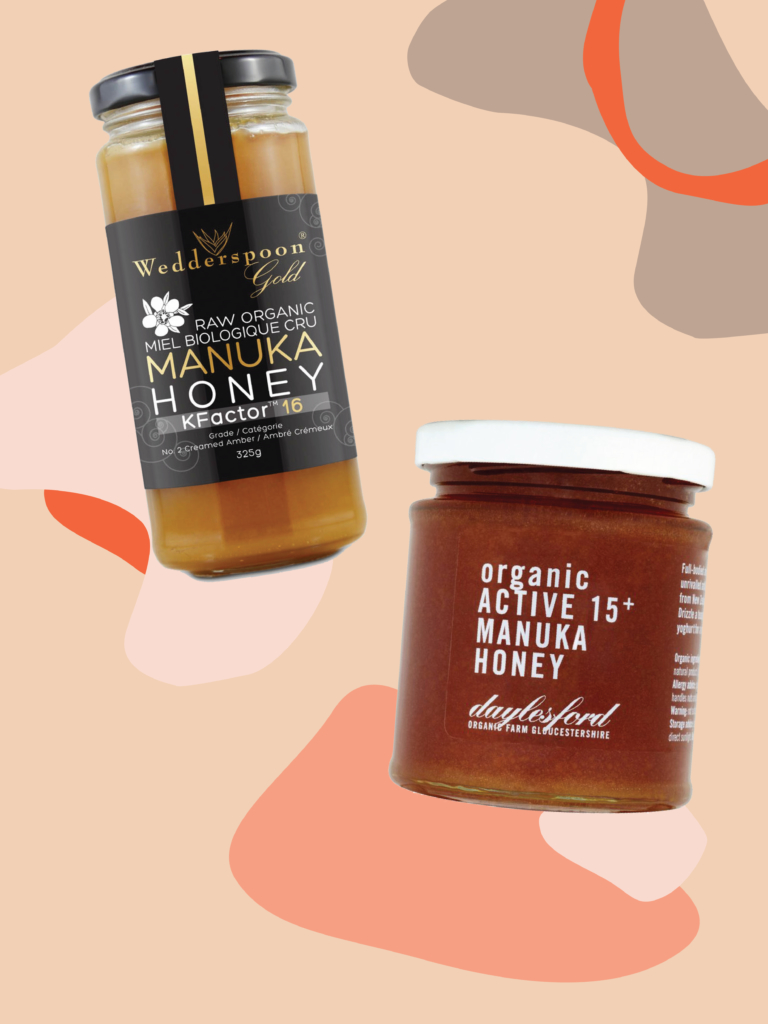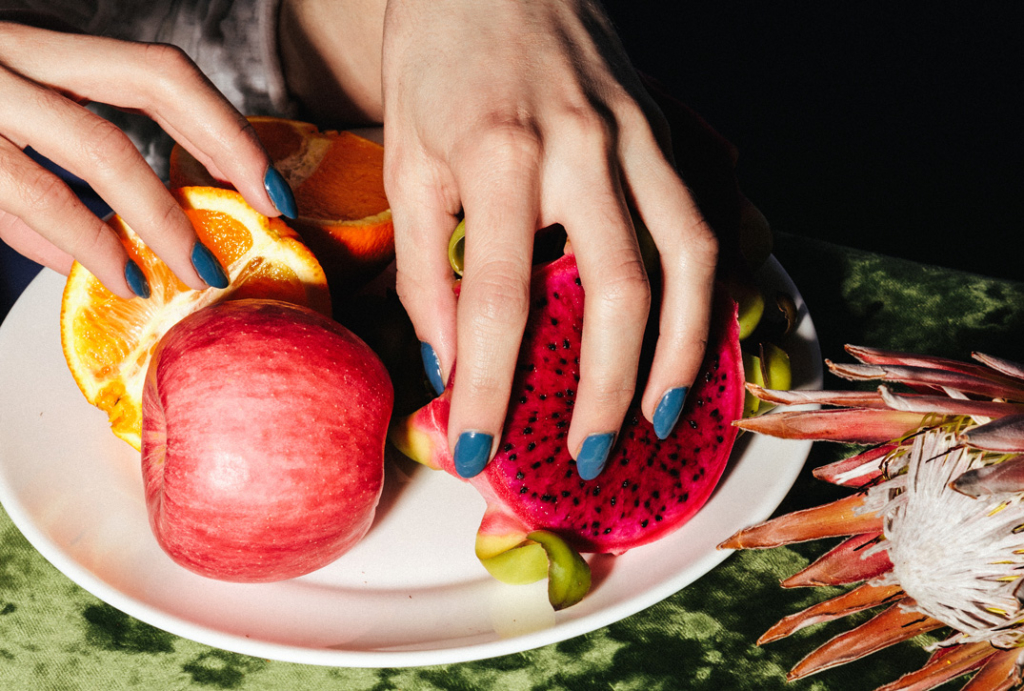
Welcome to the Wellness One-oh-Ones, a digital encyclopedia for all your wellness needs. This series is geared to tackle those everyday questions you secretly ask yourself in wonderment when you hear about a new trend. Instead of pretending to know what people are talking about, come hang with us as we uncover the latest and greatest in the wellness industry. Check back every other Wednesday to pick up your refill — no doctor’s signature required.
Manuka Honey has probably made a name for itself thanks to a little-known family called the Kardashians. The sisters are known to be huge fans — which, in return — means everyone and their moms are now adding this new wellness/beauty trend to their everyday routines. Why? Well, aside from the fact that everything the Kardashians touch seems to go viral within minutes, Manuka Honey is something you *actually* want to invest in. But before you blindly throw your money into buying a jar of liquid gold, scroll below to see why you need to add this ancient health elixir to your pantry.

So like, what is Manuka Honey, anyway?
Unlike regular commercial honey, which is pasteurized to kill any yeast to prevent fermentation, Manuka Honey is derived from the flower of Manuka trees and can be found in New Zealand and Australia. Being a natural remedy for ailments for thousands of years, this type of honey has various levels of compounds — such as Leptosperin and DHA — with very high concentrations of methylglyoxal (MGO), which gives the honey its potent antibacterial properties. But to determine the exact quantity of these compounds, each Manuka Honey brand has to go through a grading system called the Unique Manuka Factor, which was created by the Unique Manuka Factor Honey Association. (Try saying that five times fast.)
The UMF is there to put the Manuka Honey through a science-based test to indicate the quality and “activity levels” of each specific product to help determine the different concentration levels of these compounds and then gives a rating (from 5+ UMF to 20+ UMF) to help retailers and buyers know which brands have the real deal.
Why is it so expensive?
Be ready to fork over a nice chunk of change. To be completely frank, Manuka Honey is. Not. Cheap. A 250-gram jar can put you back $30 USD and that’s not even the most expensive kind — it’s even a little out of Winnie the Pooh’s budget. But if you want the good stuff, you may want to create a whole new budget for this wellness trend.
Basically, what determines the price is the UMF grading system; the higher the grade, the more money you’ll be handing over. For instance, 20+ Manuka Honey is known to have one of the highest concentrations of the MGO compounds. However, the good news is all you need is 10+ UMF to truly reap the benefits. So you can save a *little* bit of cash if you want to.

How do you know which one to buy?
While there are multiple brands to choose from, you want to make sure that the Manuka Honey is legit by making sure it passes the UMF grading system. But if you’re just looking for someone to just lead you in the right direction for the kind of brand you should by… then you came to the right place. See below for our favorite brands:
- Manuka Health – MGO 400+ Manuka Honey, 100% Pure New Zealand Honey
- Comvita Manuka Honey UMF 15+ (Super Premium)
- Kiva Certified UMF 20+ – Raw Manuka Honey
Is there a certain way to use Manuka Honey?
Uh, yes. Like, a lot. Manuka Honey is a gold mine for everything and anything beauty and wellness. From face masks to bath time to curing a common cold, check below for all the ways you can incorporate this honey into your everyday routine.
Prevents Infections: According to Health, Frances Largeman-Roth, RD, nutritionist and author of Eating in Color, said, “When you put it on a wound, all the liquid in the wound gets drawn into the honey because it has the ability to absorb the moisture. By sucking up all the impurities, the honey protects the body against infection.”
Make You Have a Better Night’s Rest: Lily Talakoub, M.D., founder of McLean Dermatology and Skincare Center, told Women’s Health Magazine, “When taken in small doses before bedtime, Manuka honey can improve the production of melatonin in the brain that regulates the circadian rhythm and helps our sleep-wake cycles.”
Clears Your Skin: Whether you use it topically or digest it, Manuka Honey can clear up your skin thanks to its antibacterial properties. “Studies show that when it was applied to the skin, it fought the bacteria that caused the acne,” said nutritionist Michelle Braude, author of The Food Effect Diet, in a Byrdie article. “But also taken internally, it was shown the bacteria helped any gut flora imbalance. The imbalance of intestinal flora can cause bad skin problems, so if you address that it can, in turn, help bad skin.”
Relieves Digestive Problems: According to Marie Claire UK, Liliana Trukawka, nutritional therapist at Comvita, said, “‘It can help reduce inflammation from digestive disorders, relieving abdominal discomfort and bloating. It contains a natural pre-biotic, which is important for nurturing the gut’s good bacteria, and can, therefore, help the digestive system rebalance itself naturally.”
Helps Relieve Sinus Issues: Because of its microbial properties, Manuka Honey can kill bacterial biofilms that are present in minor sinus infections when placed in the nasal cavity. While it doesn’t do the job for major sinus infections, according to a study, it can be a good substitute when antibiotics and steroids are not available.
[Editor’s Note: Since we’re not know-it-alls, always make sure to consult with a doctor before trying anything new. We’re here to guide and provide information that could potentially help, but each person is different so do what’s right for you!]
–
Feature Image via Madison Terry

